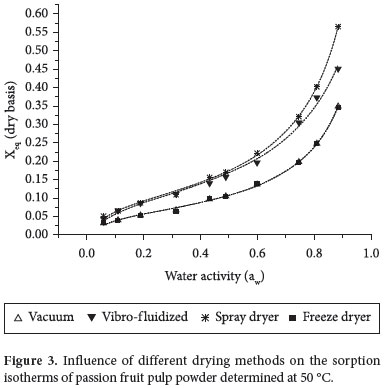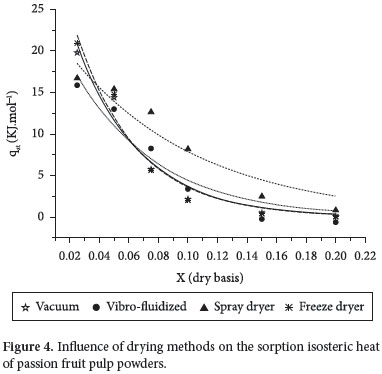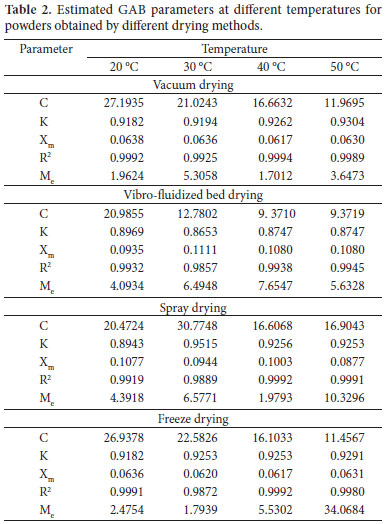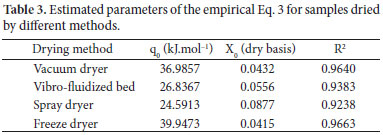The sorption behavior of dry products is generally affected by the drying method. The sorption isotherms are useful to determine and compare thermodynamic properties of passion fruit pulp powder processed by different drying methods. The objective of this study is to analyze the effects of different drying methods on the sorption properties of passion fruit pulp powder. Passion fruit pulp powder was dehydrated using different dryers: vacuum, spray dryer, vibro-fluidized, and freeze dryer. The moisture equilibrium data of Passion Fruit Pulp (PFP) powders with 55% of maltodextrin (MD) were determined at 20, 30, 40 and 50 ºC. The behavior of the curves was type III, according to Brunauer's classification, and the GAB model was fitted to the experimental equilibrium data. The equilibrium moisture contents of the samples were little affected by temperature variation. The spray dryer provides a dry product with higher adsorption capacity than that of the other methods. The vibro-fluidized bed drying showed higher adsorption capacity than that of vacuum and freeze drying. The vacuum and freeze drying presented the same adsorption capacity. The isosteric heats of sorption were found to decrease with increasing moisture content. Considering the effect of drying methods, the highest isosteric heat of sorption was observed for powders produced by spray drying, whereas powders obtained by vacuum and freeze drying showed the lowest isosteric heats of sorption.
water activity; maltodextrin; freeze drying; spray drying; vaccum drying; vibrofluidized bed











